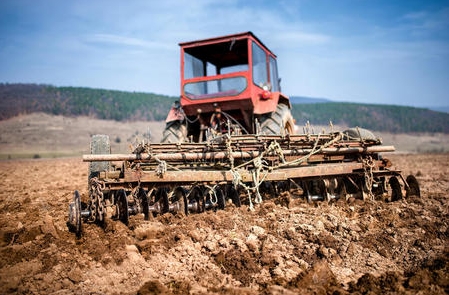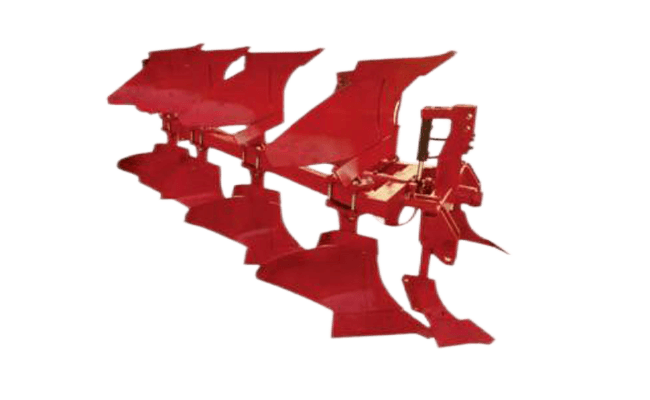In the ever-evolving world of agriculture, plowing and tilling are fundamental practices that shape the success of farming operations. As modern farmers face challenges such as soil degradation, climate change, and increasing demands for productivity, understanding the nuances between plowing and tilling becomes crucial. Both techniques play a vital role in soil management, but choosing the right approach can significantly impact soil health, crop yield, and overall farm sustainability.
Plowing vs. Tilling: Which is Better for Your Soil? Plowing and tilling are essential for soil preparation, but they serve different purposes. The plowing involves turning over the top layer of soil, which helps incorporate organic matter and control weeds. Tilling, on the other hand, breaks up the soil to improve aeration and create a better seedbed. For soil health, plowing can enhance soil structure and nutrient availability, while tilling focuses on aeration and moisture retention. Choosing between the two depends on soil type, crop needs, and environmental conditions.
This guide provides a detailed exploration of plowing and tilling, offering insights into their benefits, impacts, and best practices to help farmers make informed decisions.
Contents
What is Plowing
Plowing is a traditional agricultural practice that involves turning over the upper layer of soil. This process helps to mix soil layers, incorporate organic matter, and prepare the field for planting. Plowing is typically performed with a plow, which can be a single or multiple-bottom plow.
What is Tilling
Tilling refers to the mechanical manipulation of soil to prepare it for planting. Unlike plowing, tilling is usually done using a variety of equipment, such as disc harrows or rototillers, to break up the soil and create a fine seedbed. Tilling can be categorized into primary and secondary tillage.
Historical Context and Evolution
Both plowing and tilling have evolved over centuries. Ancient farmers used simple tools like wooden plows, which were gradually replaced by iron and steel plows. In recent years, technological advancements have led to more efficient and precise equipment, improving the effectiveness of both practices.
Purpose and Benefits
Objectives of Plowing
- Soil Preparation: Plowing helps to prepare the soil by turning it over, which improves its structure and makes it easier for roots to penetrate.
- Weed Control: By burying weeds and their seeds, plowing helps to reduce weed competition.
- Soil Fertility: Incorporating organic matter and nutrients into the soil enhances its fertility, which can lead to better crop yields.
Objectives of Tilling
- Soil Aeration: Tilling improves soil aeration by breaking up compacted layers, allowing roots to access oxygen more easily.
- Seedbed Preparation: Tilling creates a smooth, fine seedbed that promotes even seed germination and growth.
- Moisture Management: Proper tilling helps retain soil moisture and reduces evaporation.

What’s Better for the Soil?
When it comes to soil health, both plowing and tilling have their advantages and drawbacks:
- Soil Health and Structure:
Plowing can improve soil structure by mixing organic matter into the soil, but excessive plowing may lead to soil compaction. Tilling, especially when done shallowly, enhances soil aeration and can reduce compaction.Historical Context and Evolution
- Effects on Soil Erosion:
Plowing can increase soil erosion if done improperly. Conservation tillage methods, like strip tilling, help reduce erosion by maintaining crop residues on the soil surface.
- Impact on Soil Organic Matter:
Plowing incorporates organic matter into the soil, which can enhance soil fertility. Tilling helps to distribute organic matter more evenly throughout the soil layers.
- Comparison of Long-Term Soil Quality:
Long-term use of either method should consider the balance between soil aeration, moisture retention, and organic matter content to maintain soil health.
Types of Plowing
- 1. Conventional Plowing: Turns over the top layer of soil, commonly used in traditional farming.
- 2. Deep Plowing: Breaks up deeper soil layers, beneficial for compacted soils.
- 3. Subsoiling: Targets deeper soil compaction without turning the soil surface.
- 4. Chisel Plowing: Uses chisel points to break up the soil without inverting it, reducing erosion risk.
Types of Tilling
- 1. Primary Tillage: Involves the initial soil breaking and preparation.
- 2. Secondary Tillage: Refines the seedbed by breaking up clods and smoothing the soil.
- 3. Conservation Tillage: Minimizes soil disturbance and maintains crop residues to protect soil.
- 4. Strip Tilling: Tills only narrow strips where crops are planted, leaving the rest of the soil undisturbed.

Comparative Analysis
- Soil Health and Structure: Both methods can improve soil health, but overuse of plowing can lead to compaction and erosion. Tilling helps with aeration but may not address deeper soil layers as effectively as deep plowing.
- Erosion Control: Conservation tillage practices help minimize soil erosion compared to conventional plowing.
- Water Management: Tilling improves moisture retention by breaking up soil crusts, while plowing can help with moisture infiltration.
- Energy and Fuel Efficiency: Modern tilling equipment is often more fuel-efficient than traditional plows, due to advances in technology and design.
- Cost Considerations: While initial equipment costs for plowing may be lower, the ongoing maintenance and energy costs can be higher compared to some tilling methods.
Technological Advances
- Innovations in Plowing Equipment: Modern plows with advanced features for better soil management.
- Innovations in Tilling Equipment: New tilling technologies that enhance efficiency and soil health.
- Future Trends and Predictions: Emerging trends in soil management practices and equipment.
Conclusion
Plowing and tilling are essential practices in modern agriculture, each with its own set of benefits and applications. Understanding the specific needs of your soil and crops will guide you in choosing the most effective method. By staying informed about best practices and technological advancements, farmers can optimize their soil management strategies for better productivity and sustainability.
FAQs
The terms “plowing” and “ploughing” essentially refer to the same agricultural process but are used in different regions:
Plowing: This term is commonly used in American English and refers to the process of turning over the soil using a plow. It involves breaking up and overturning the top layer of soil to prepare it for planting.
Ploughing: This is the British English spelling of “plowing” and refers to the same process. The term is used in countries that follow British English conventions.
Plowing and discing are both soil preparation techniques but serve different purposes and use different equipment:
Plowing:
· Purpose: Primarily used for turning over and aerating the soil. It involves breaking up large clumps of soil and burying crop residues.
· Equipment: Uses a plow, which consists of one or more blades or shares that cut into the soil.
· Effect: Deeply inverts the soil, which can improve soil structure, control weeds, and incorporate organic matter.
Discing:
· Purpose: Used for breaking up and smoothing the soil surface. It is often done after plowing to refine the soil structure.
· Equipment: Utilizes a disc harrow, which has a series of concave metal discs that cut into and mix the soil.
· Effect: Shreds soil clumps into finer particles, levels the field, and prepares a finer seedbed. It is generally less aggressive than plowing and is often used for seedbed preparation or secondary tillage.
In summary, while plowing is more about turning and inverting the soil, discing focuses on refining the soil surface and preparing it for planting.

